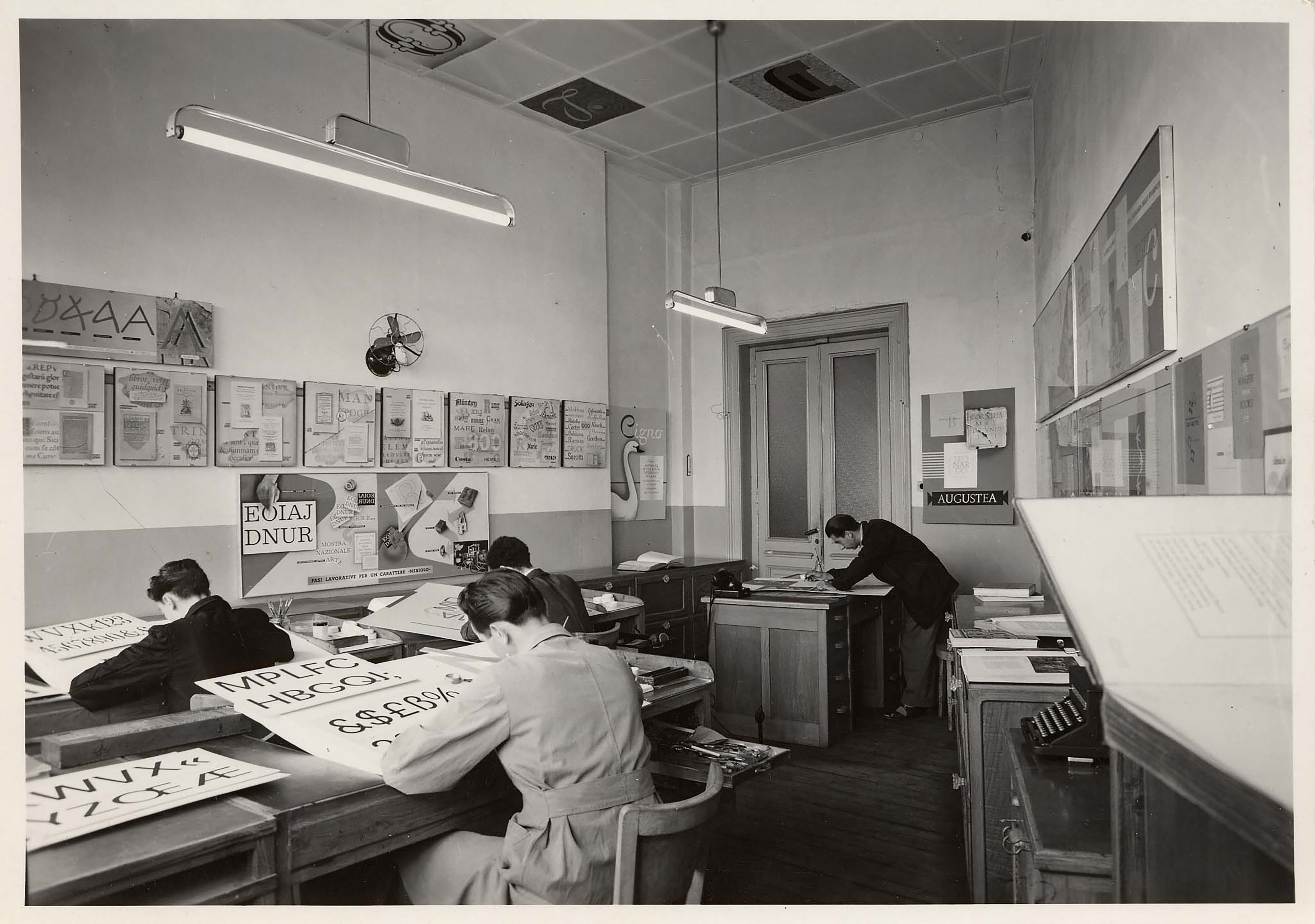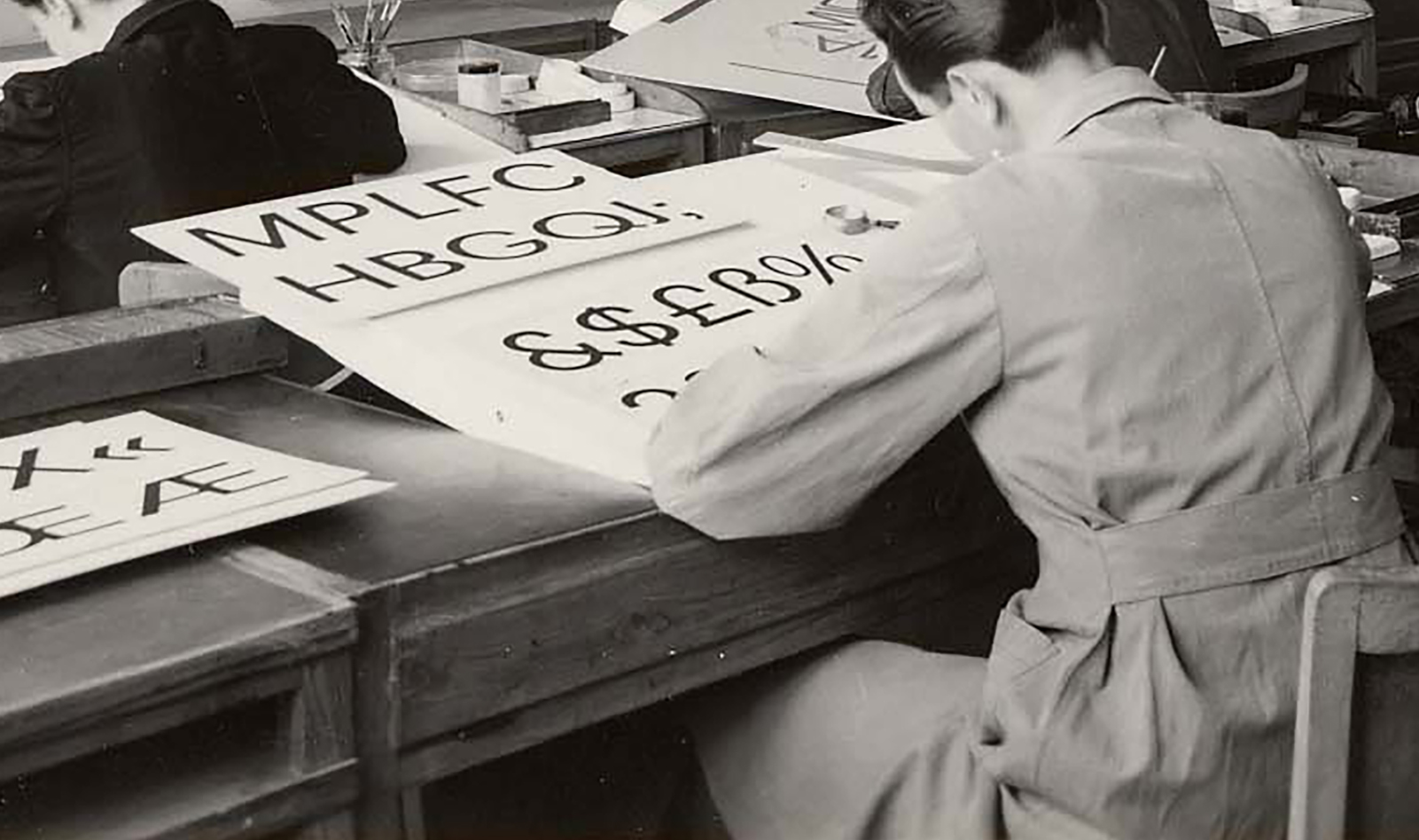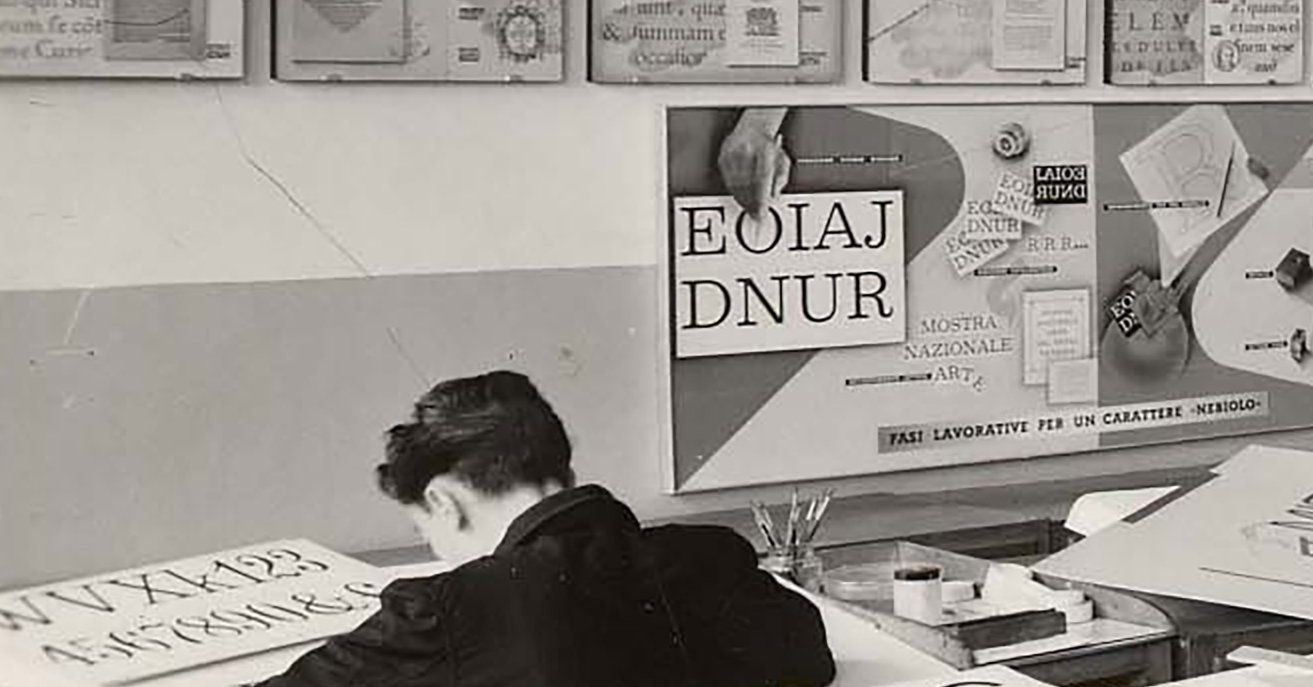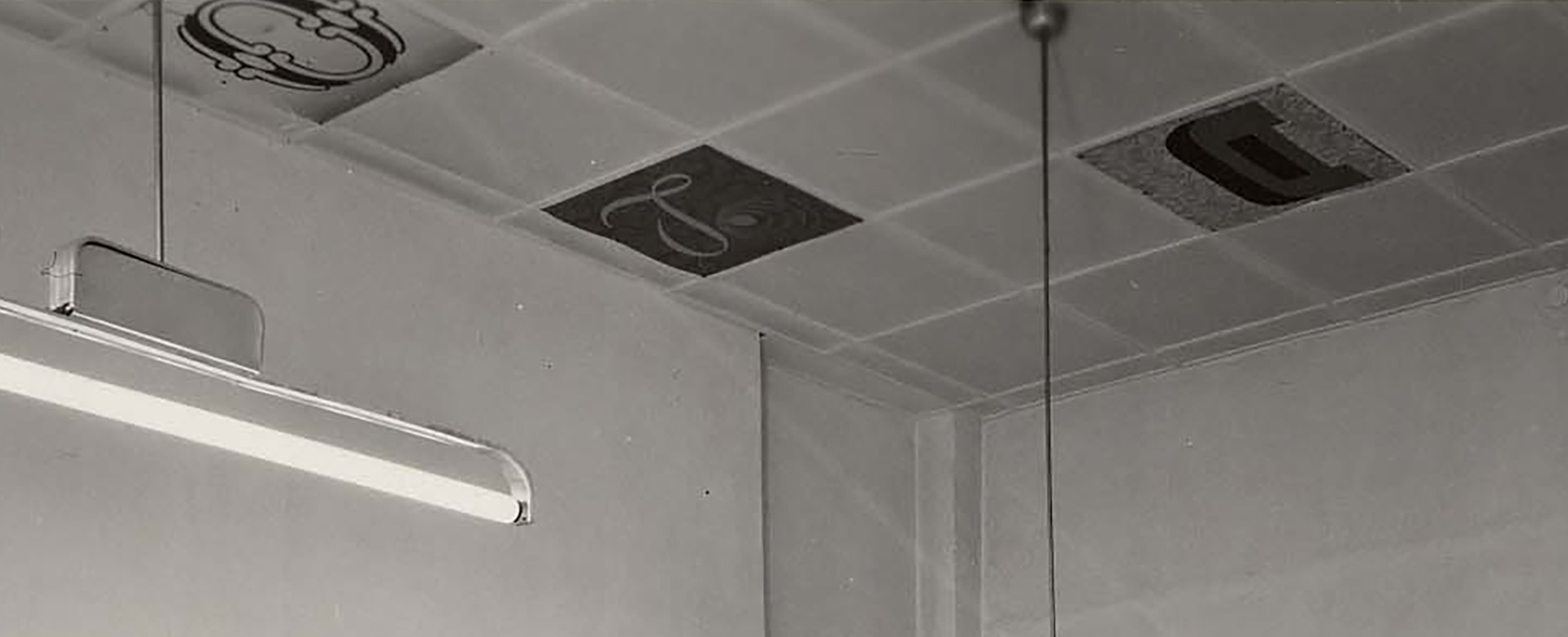One of the objectives we have set ourselves in the Nebiolo History Project research group is to clarify the genesis and history of Nebiolo typefaces, in particular those produced after 1933, when an in-house department, the so-called ‘Studio Artistico’, was set up for the creation of new designs. This research proves very difficult, as the company’s archive was broken up after its closure and so is not fully available.
Fortunately, clues allowing us to date the typefaces can also be found in the company photos of the Studio Artistico, although few have survived. There are none, for instance, from the time when Giulio Da Milano was director (1933–1936); and there are only three photos of the Studio Artistico from the time of Alessandro Butti (1936–1952). Recently we have realised that one of these photos offers some evidence as to the origin of certain typefaces released by Nebiolo in the years following Butti’s dismissal. He left in October 1952, following a period of serious financial difficulty at the Turin foundry.

Undated photo taken inside the Nebiolo foundry’s design studio, the Studio Artistico.
Dating and description
This photo appears in the undated type specimen book Campionario caratteri e fregi tipografici (‘Specimens of type and ornaments’). We do not know exactly when it was printed, but thanks to the abbreviation and serial number on the back, PC 570, we have a reference date. The logic behind the serial numbering of Nebiolo advertisements and specimens has not yet been fully clarified, but since specimen PC 594 is dated September 1952 (9–52), we can surmise that specimen book PC 570 – and therefore the photo – predates Butti’s dismissal.
The photo shows the Studio Artistico with four draughtsmen at work – the director Butti does not appear. Nebiolo draughtsman Gianni Parlacino has confirmed that the one in the foreground with the overalls is Aldo Novarese, and the person standing leaning over the table at the far back seems to be Ennio Lavagno, as he was identified by his son Irio. Lavagno left a memoir in which he described the work at the Studio Artistico under Butti’s directorship. The two other draughtsmen have not been identified.

Aldo Novarese in the Studio Artistico, working on the Recta typeface.
Identification of the typefaces
Novarese is working on Recta, a type family to be released only in 1958 and considered Nebiolo’s response to Univers and Helvetica, both placed on the market in 1957. We know from Lavagno’s memoir, however, that apart from the styles later added by Novarese, it was Butti who designed Recta roman before he was dismissed in 1952. Which shows how well he was able to anticipate certain market trends.

Close-up on one of the Studio Artistico draughtsmen at work on the Egizio typeface.
But let’s go back to our photo. The draughtsman in front of Novarese is working on Egizio (to be released in 1955) – the same typeface also appears on the wall in a poster-diagram entitled Fasi lavorative per un carattere «Nebiolo» (‘Stages of work on a Nebiolo face’). Along the wall we can also see a row of specimens, and a poster of Cigno, which would be released by Nebiolo in 1954. The fourth draughtsman is working on a rather well-known specimen (PC 600) of Microgramma, a caps-only face designed by Butti and released in 1952. Finally, the ceiling, partially visible, is covered with square panels; on some of them there are large capital letters, one of which is definitely the O from Fontanesi. Its first known appearance is in Graphicus No 34, published in October 1953, but in the first edition of Alpha-beta (1964, p. 161), Novarese himself dates Fontanesi to 1951. The photo thus seems to confirm its true origin as from Butti’s time.

A poster for Nebiolo’s Cigno typeface hanging on the wall in the background, following a row of specimens.

You can see the capital O from the Fontanesi typeface at the top-left of this crop. It is one of the letters mounted on the ceiling of the Studio Artistico.
Conclusion
From a detailed analysis of the photograph of the Studio Artistico published in Nebiolo specimen book PC 570, we can infer that four typefaces commonly attributed to Novarese based on the fact they were released after 1952, are attributable to the directorship of Alessandro Butti: Fontanesi, Cigno, Egizio and Recta.

